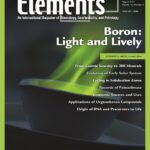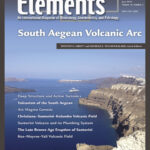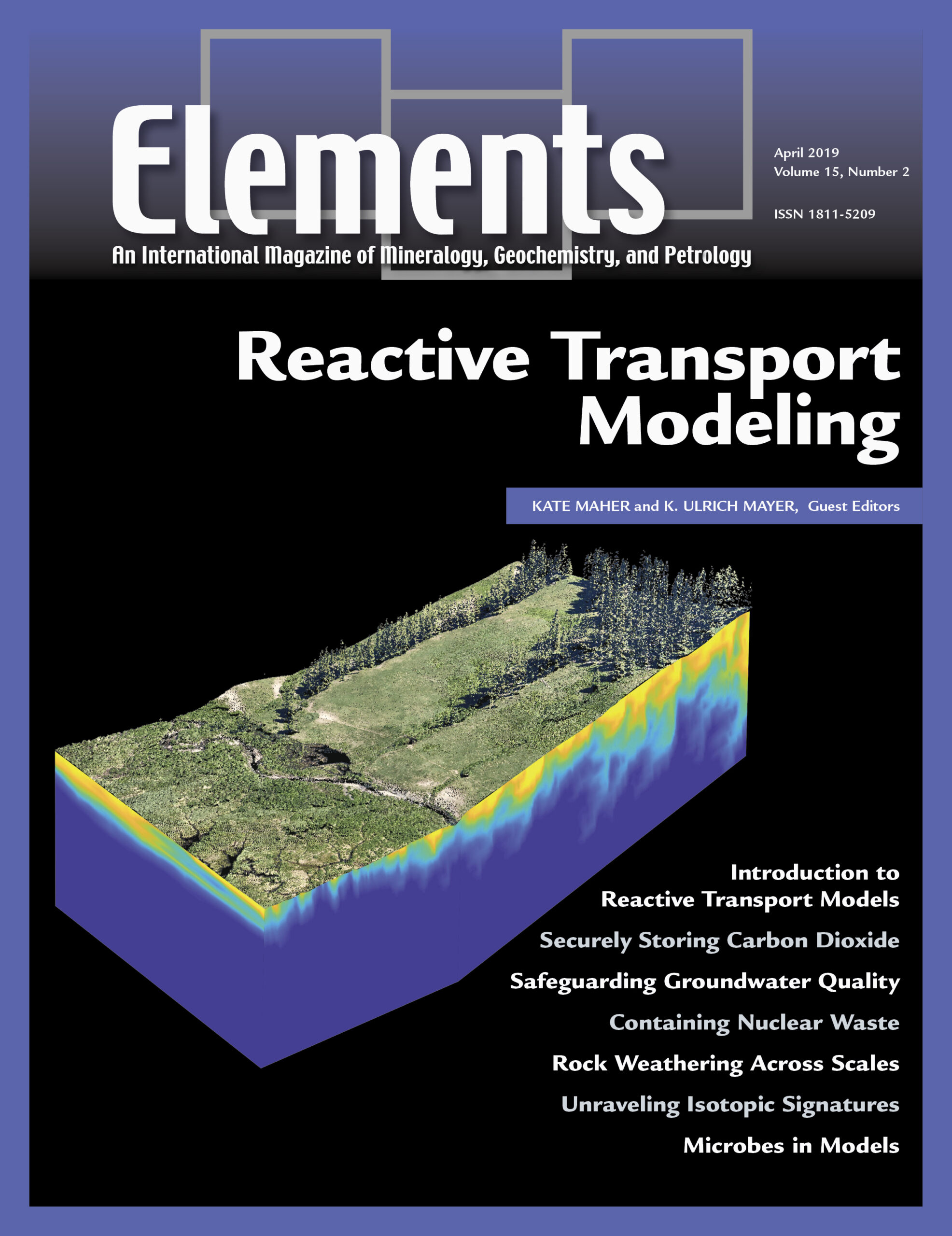
Boron: Light And Lively, August 2017, Vol. 13, No. 4
June 28, 2024
South Aegean Volcanic Arc, June 2019, Vol. 15, No. 3
June 28, 2024Reactive Transport Modeling, April 2019, Vol. 15, No. 2
$20.00
Reactive transport modeling, or computer simulations of the transfer of mass and energy through the subsurface, has become a central tool for understanding how Earth’s unique chemical environments are formed, how they function today, and how they might behave in the future. This process-based approach has enabled us to gain a new understanding of a diverse array of Earth processes, from biogeochemical cycles in marine sediments and the factors that control soil formation, to the evolution of contaminated groundwater systems and the engineered containment of nuclear waste.
Reactive Transport Modeling
April 2019, Vol. 15, No. 2
Reactive transport modeling, or computer simulations of the transfer of mass and energy through the subsurface, has become a central tool for understanding how Earth’s unique chemical environments are formed, how they function today, and how they might behave in the future. This process-based approach has enabled us to gain a new understanding of a diverse array of Earth processes, from biogeochemical cycles in marine sediments and the factors that control soil formation, to the evolution of contaminated groundwater systems and the engineered containment of nuclear waste. The diverse contributions in this issue highlight the unique role that reactive transport models have played in advancing our understanding of Earth’s shallow crustal environments and our human interactions with them.
Why You’ll Love Elements Magazine:
- Expert Contributors: Articles written by renowned researchers in the field of geoscience.
- Engaging Content: Join a community of readers who are passionate about Elements.
- Exceptional Quality: Each issue is printed on high-quality paper with stunning visuals and detailed illustrations that bring complex scientific concepts to life.
Order your copy of the April 2019 issue of Elements magazine today and delve into reactive transport modeling.
Related products
-
Frontiers In Textural And Microgeochemical Analysis, August 2007, Vol. 3, No. 4
$20.00Recent advances have been made in high-resolution in situ methods to image mineral growth patterns, analyse compositional and isotopic zonation, and improve our ability to visualize, study, and model rock textures in three dimensions. These advances provide a significant step forward in the understanding of how rocks form and the history they can tell us.
-
Water On Mars, June 2006, Vol. 2, No. 3
$20.00During the past several decades, spacecraft data have transformed the planets from astronomical objects into geologic worlds. Mars is the current focus of planetary exploration, and NASA’s objectives for this effort are based on the theme, “follow the water.
-
Platinum-Group Elements, August 2008, Vol. 4, No. 4
$20.00The geoscientific and economic significance of the PGE is immense. Due to their extreme siderophile and chalcophile behaviour, the PGE are highly sensitive tracers of geological processes involving metal and sulfide phases.




